Cone Beam Computed Tomography
(Also called: computed tomography, cone beam tomography, volumetric tomography)
Basic information about the examination:
| Name: | CBCT |
| Duration: | approximately 30 seconds |
| Radiation dose: | 20-150 µSv |
| Whether a referral is required: | |
| Does it require preparation for the examination: |
What is CBCT?
CBCT (Cone Beam Computed Tomography) is a modern, non-invasive and very precise examination that allows imaging of all structures of the head: maxilla, mandible, temporomandibular joints, face and sinuses. This type of examination uses X-rays in the form of a cone beam. The use of only one radiation source in the state-of-the-art equipment used in our laboratories allows us to minimise the radiation dose even to 20 µSv in the case of examining a fragment of a dental arch, to a maximum of 150 µSv in the case of examining larger structures, such as the face. Can tomography be hazardous to health? Although the dose used in CT is higher than the dose you will receive during a pantomogram or cephalometry, it is still a safe examination. To determine if the examination is safe for you, the doctor should obtain your medical history before referring you for the examination.
When should a CBCT scan be performed?
Computed tomography is used in many fields of medicine. For dental and ENT radiology, patients are most often referred to CBCT for cases such as:
- periodontal treatment; periodontology is a branch of dentistry dealing with diseases of gums and mucous membranes
- root canal treatment, endodontic treatment, in cases of atypical course of the tooth canal or simply more complicated and complex procedures
- diagnosis, treatment and action planning in the field of orthodontics; e.g., for temporomandibular joint disorders
- treatment of developmental disorders in the cranial area
- maxillofacial surgery and orthognathics
- planning and controlling the course of implant treatment, fixing prosthetic bridges, fixed prostheses, etc.
- laryngology - diagnosis, planning and monitoring of the course of treatment; assessment of the structures of the sinuses, nasal cavities, middle ear
How to prepare for the examination?
Although no special preparations are necessary before the visit, any objects containing metal, such as jewellery, elements of piercings, glasses, removable dentures or braces, hair clips or rubber bands with metal connections should be removed from the head and neck area just before the examination. Metal (including precious metal) becomes visible on the CT scan so clearly that it could obscure the examined structures.
Course of the examination
Depending on the area to be examined, the course of the examination may vary.
For a maxillary/mandibular slice CT scan, the patient will be given a disposable bite block, which should be placed inside the mouth in accordance with the radiographer's instructions. They will then be asked to straighten up, stretch their arms out in front of them and grasp the camera at the indicated point. The examination takes up to a minute, and during this time, it is important to remain in a still position. After the examination, in just a few minutes, the patient will receive the result on a CD (to find out about other media on which examinations are issued, click here - EXAMINATION RESULTS.
The most important part of the examination is compliance with the instructions of the attending radiographer. The above description of the examination may vary from case to case.
Where can I get a CBCT scan?
The examinations are performed in Diagdent units located in the following districts in Warsaw: Białołęka, Bielany, Centrum, Praga Południe, Tarchomin, Ursynów and Włochy and in Diagdent Wrocław branch located in the centre of Wrocław. We ensure a comfortable visit and the highest quality of examinations performed on modern diagnostic equipment by qualified staff of radiographers in each of the locations. Please contact us! You are welcome!

![]()
![]()
![]()
![]()
![]()
![]()


